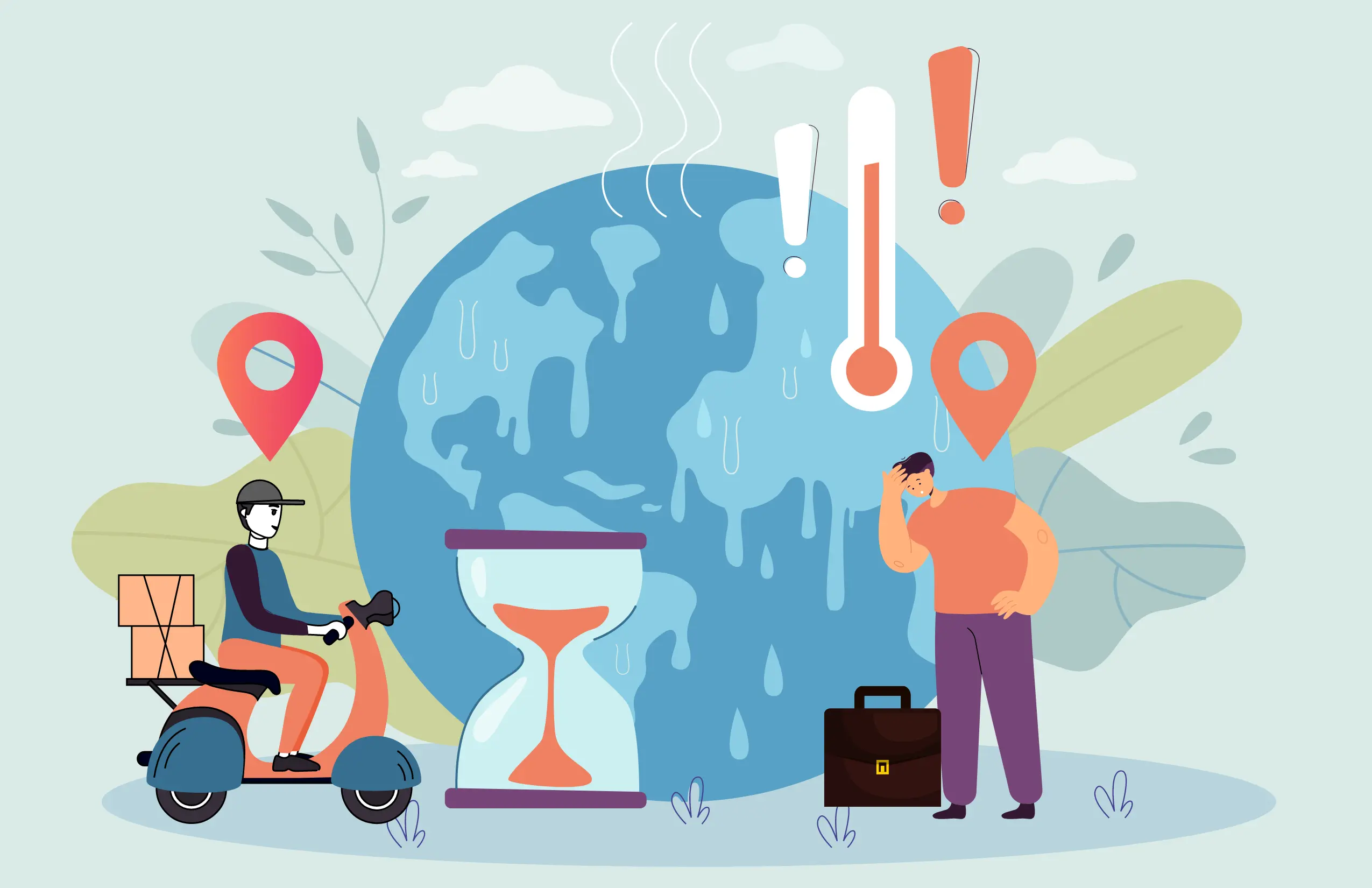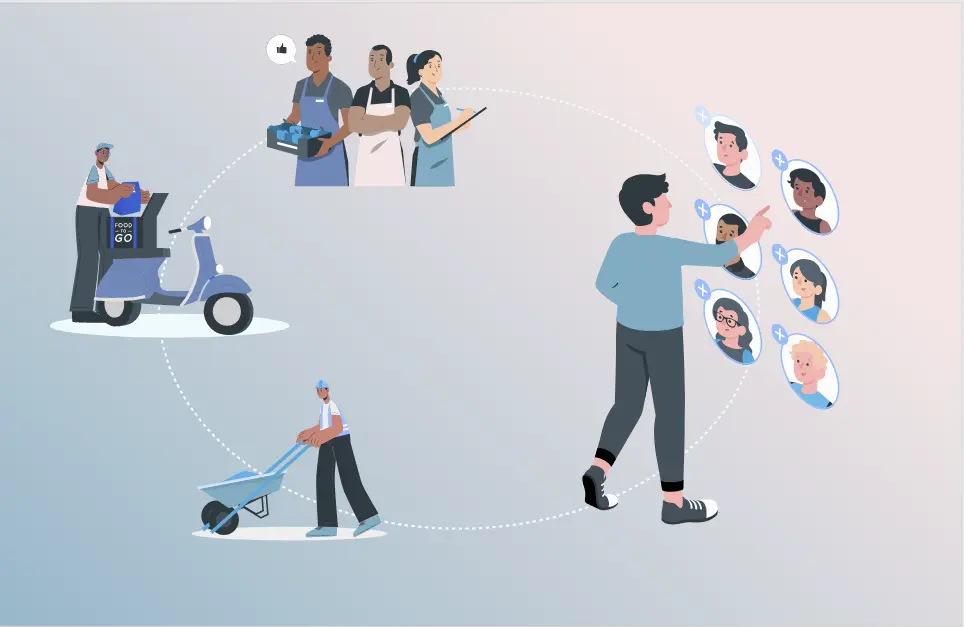
How Climate Change Affects Field Workers Productivity
Table of Contents
Climate change is a terrible problem, and it needs to be solved. It deserves to be a huge priority.”-Bill Gates, Founder of Microsoft.
Climate change knows no geographical boundary.
Its continuity grabs attention when high temperature and humidity, severe storms, or heavy rainfall without a monsoon is about to reach a tipping point from which there’s no place for reversibility.
It is felt by all, surely, but severely felt by the masses who have to work from the field to get hard-earned money despite the weather’s changing mood.
Yeah! You guessed it right. I’m talking about people who’re mainly in on-field jobs where their hourly work each day is done from construction sites, agricultural land, fisheries, door-to-door sales, and many more like this.
Well, the aftermath of climate change clearly shows in the field employees when their productivity and ability to work is continuously decreased due to poor mental and physical health.
How? Let’s delve into a detailed discussion about it!
The Unstoppable Climate Change is Crippling Field Employee Productivity
What do the reports say? The effect of changing climate is far and wide, which you can realize by the following data:
- According to the statement by the University of Chicago, the continuous increment in average temperature causes a reduction in employee productivity which leads to the absence.
- The study by International Labor Law highlighted that stress will be the main cause of losing around 5% of working hours in the sub-region of Southern Asia and Western Africa.
- The Economic Times, a leading media house in India released a news article, according to which the employment productivity can show a decrease of 40% by 2100.
Although I’ve summed up the data to highlight the impact of the changing climate on field employees as a whole, now I explained below how hazardous it can be in real-time:
- Rising temperature due to heat stress directly declines the productivity of on-field workers as the impact pushes them to accomplish tasks beyond their physical capabilities. As the sunny weather sucks their energy and makes them exhausted, a lower pace and fewer working hours can jeopardize their reaching an optimum level to finish any task within a given time frame.
- In climate change, reduced air quality is another culprit that no one can deny. When the air quality is continuously lessened to below normal, the dust storms blanket the field and cause a rage to create breathing issues which is how the on-field workers become less productive.
- The unpredictable flood and drought due to severe climate change push on-field workers to stay at home and its continuity for longer days can make them unconcerned about task completion. And the simultaneous effect brings on attention when they feel less energetic and engaging while they become more lethargic.
- The physiological impact of climate change in on-field works isn’t all, its wider effects are much more to say about mental well-being. Frequently dealing with less productivity, hefty work stress, and changing environmental conditions make them feel more anxious, furious, and flipping emotions.
The repercussions of climate change never allow on-field employees to maintain a better work-life balance which directly causes economic distress. Therefore, productivity maintenance and increasing your field team performance remain a question similar to planning and winning a gamble.
Focus on Early Adoption of Policies to Maintain a Balance of Field Workers’ Natural Productivity
Although the situation of employees’ lowest productivity is definitely dire, better planning to make a move with actionable points can build a resilient workforce. How?
- Adjusting work schedules in different shifts when the weather is a little cooler and encouraging field workers to take breaks in between tasks and work from home wherever possible can be a great choice. Thus, they can at least save from bearing heatwaves, and heavy flood flow, feeling less suffering.
- When knowledge is the genie to make oneself more sustainable in any situation, educating on-field workers about symptoms of climate change and its prevention hacks can create a protective shield around them.
- With the advancement of technology, when many field tasks can be done more precisely within a shorter time, making use of them at least in the worst environmental conditions is definitely a wise decision. Thus, it can create a win-win situation while saving the lives of many field employees.
- Last but not least, having modern field employee productivity software like Lystloc to track a particular task and its time and analyze its daily graph helps you make a coherent, quick, and informed decision. Its benefits say a lot when the strategic analysis beforehand not only helps you increase your employee productivity but also saves you from risky financial losses.
It’s High Time Acknowledging Climate Change Impacts on Field Workers’ Productivity is A Must
“If you spend too much thinking about a thing, you’ll never get it done.”- Bruce Lee.
Well, I guess, you may agree that to smoothly run your business and build a flawless revenue flow, your dependability on field workers can’t be denied. If it’s so, delaying acknowledgment of the changing effect of climate on field employees and taking smart and proactive steps to dodge the situation can make you feel regretful.
So, when you have to have the backbone of experienced and expert field employees, understand the hazardous present and future scenarios, adapt flexible strategies and policies, and open a new door for your field employees.
Remember, your one small step today towards monitoring the field workforce can profit your business in the long run & always make you prepared for bigger changes in the near future.




